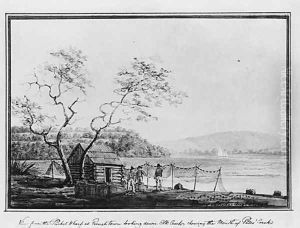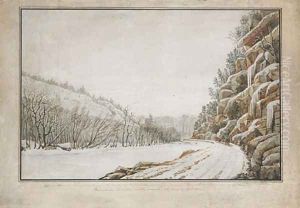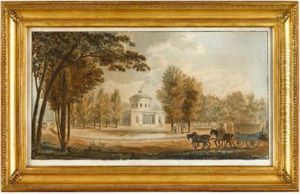Benjamin Henry Latrobe Paintings
Benjamin Henry Latrobe was born on May 1, 1764, in Fulneck Moravian Settlement, Yorkshire, England. He was a prominent figure in the history of American architecture and engineering, widely recognized as one of the fathers of American architecture and the nation's first professional architect. Latrobe's work and influence played a crucial role in shaping the architectural landscape of the early United States, introducing and popularizing the neoclassical style. He was educated in England and Germany, which allowed him to bring European architectural concepts to America, where he sought to adapt them to the young country's needs and aspirations.
Latrobe's career in America began after he emigrated in 1796, initially settling in Virginia before moving to Philadelphia. His architectural legacy includes designing significant buildings and structures, notably the United States Capitol in Washington, D.C., where he was appointed as the Surveyor of the Public Buildings of the United States in 1803 by President Thomas Jefferson. Latrobe was responsible for the design and construction of the Capitol's north and south wings and its iconic central dome, blending neoclassical architectural elements with innovative engineering techniques. His other notable works include the Baltimore Basilica, considered one of the finest examples of neoclassical architecture in America, and the Bank of Pennsylvania, which is often cited as America's first monumental Greek Revival building.
Beyond his architectural achievements, Latrobe also made significant contributions to engineering and urban planning. He worked on the water supply system for Philadelphia, enhancing both its efficiency and public health, and was involved in planning parts of the Chesapeake and Ohio Canal. His influence extended into the realm of education, where he lectured on architecture and engineering, thereby laying the groundwork for the professionalization of architecture in the United States.
Latrobe's impact on American architecture and engineering was profound, setting standards for aesthetic beauty, structural functionality, and the use of classical forms in the context of a democratic republic. Despite facing personal and financial challenges throughout his career, including the loss of his wife and children, Latrobe's legacy endured. He died on September 3, 1820, in New Orleans, Louisiana, where he was working on the waterworks project for the city. His contributions to American architecture and engineering continue to be celebrated for their innovation, elegance, and lasting influence on the nation's built environment.


